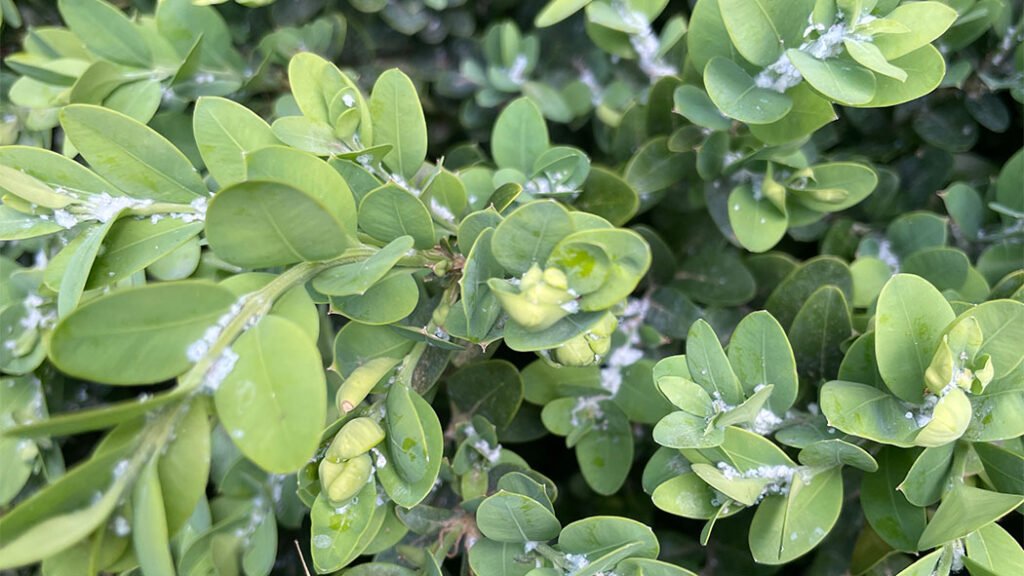This year, there have been several instances of Boxwoods displaying significant infestations of Boxwood Psyllid. Although treatment is typically not recommended, some situations have warranted it due to the severity of the infestation. Homeowners have been given the choice regarding whether to pursue treatment.
What is Boxwood Psyllid and what impact does it have on your shrub?
Boxwood Psyllid is frequently observed during this time of year, with nymphs emerging from late May to June. These nymphs secrete a waxy, sticky coating around their bodies. If you notice cupped leaves on your Boxwood, this is a result of nymph feeding. This leads to irreversible aesthetic damage, transforming the typical flat ovate boxwood leaves into ones that resemble peas. While the nymphs do not harm the shrub’s health, they significantly affect its appearance.
Additionally, adult psyllids may become visible. It is important to differentiate between the psyllids and Leafminer (midge), as psyllids are generally harmless whereas Leafminers can cause serious damage. If flying insects are abundant and yellowing spots appear on your Boxwood, contact your arborist to address the potential issue of Boxwood Leafminer. Adult psyllids tend to hop gracefully rather than fly extensively.
When should you consult an arborist about Boxwood Psyllid?
It is advisable to contact your arborist at any time, particularly if you are considering whether treatment is necessary. There is a balance between maintaining your economic investment and preserving the environment. Treatment may only be required for one or two years to control the population effectively. Discuss with your arborist the appropriate treatment methods for your Boxwoods to ensure optimal care.


